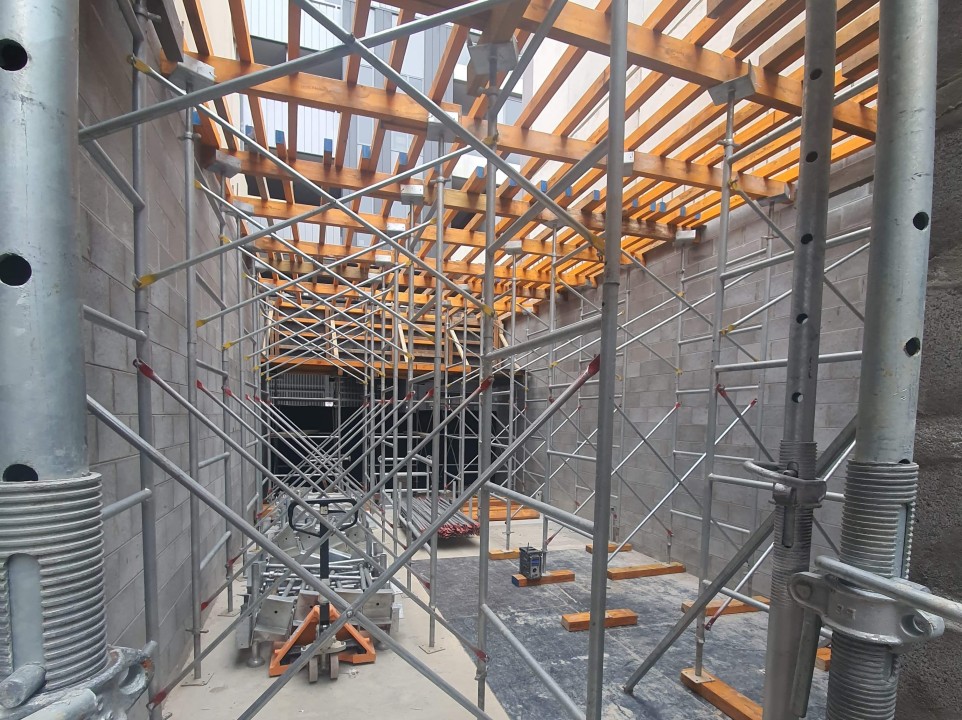Dec . 11, 2024 16:09 Back to list
Exploring Innovative Techniques in Temporary Structures for Construction Projects
The Art and Science of Shuttering in Construction
Shuttering, often referred to as formwork in the construction industry, plays a crucial role in the overall process of building and infrastructure development. This temporary structure is designed to hold wet concrete in place as it cures, shaping it into the desired form for walls, floors, and other architectural elements. The significance of shuttering cannot be overstated, as it ensures the integrity and precision of concrete structures, all while representing a fine blend of engineering and craftsmanship.
Types of Shuttering
Shuttering can be broadly categorized into three main types traditional timber formwork, metal formwork, and modular formwork. Each type has its own set of benefits and applications.
1. Traditional Timber Formwork This is the most commonly used method, particularly for small-scale projects. Timber is readily available, easy to work with, and cost-effective. However, it does require careful planning in terms of design and assembly to ensure that the final concrete structure adheres to the necessary specifications.
2. Metal Formwork Comprising materials such as steel or aluminum, metal formwork is known for its durability and reusability. It is ideal for larger projects where consistency and speed are essential. The initial cost might be higher compared to timber, but its longevity and the precision of the forms can lead to significant savings in the long run.
3. Modular Formwork This innovative method consists of pre-engineered components that can be easily assembled on-site. The modular approach not only accelerates installation but also minimizes waste. With a variety of shapes and sizes available, modular systems cater to complex architectural designs, allowing for greater flexibility in construction.
The Importance of Proper Design
The design phase of shuttering is critical; it requires an understanding of both structural integrity and aesthetic appeal. Engineers and architects must collaborate closely to ensure that the formwork accurately reflects the intended dimensions and supports the weight of the concrete while preventing any leakage or deformation. The design must also accommodate for factors such as temperature fluctuations and settling, which can affect the curing process.
shuttering

Moreover, safety is paramount in shuttering design
. The structure must withstand the forces imposed by the wet concrete, which can weigh several tons. Adequate support systems should be in place to prevent any collapse, as such incidents can result in significant financial losses and pose a serious risk to worker safety.Innovation in Shuttering Technology
With advancements in technology, the construction industry has seen significant innovations in shuttering techniques. For instance, the introduction of self-climbing formwork systems allows for safer and more efficient vertical construction. These systems reduce the need for scaffolding, thereby minimizing labor costs and improving site safety.
Additionally, digital modeling and design software have transformed how formwork is planned. Building Information Modeling (BIM) enables precise simulations of the construction process, allowing project teams to anticipate potential challenges and make adjustments before physical construction begins. This proactive approach helps in reducing waste and optimizing resource allocation.
Challenges and Considerations
Despite the advancements in shuttering technology, challenges remain. Weather conditions, such as heavy rain or extreme temperatures, can impact the curing process, leading to delays and additional costs. Furthermore, the need for skilled labor to install and dismantle shuttering frameworks adds another layer of complexity.
Environmental concerns are also noteworthy. Traditional timber formwork can raise issues related to sustainability, as deforestation and resource consumption become increasingly critical in construction practices. The adoption of recyclable materials and modular systems has emerged as a response to these challenges, contributing to greener construction practices.
Conclusion
In conclusion, shuttering serves as a fundamental component of modern construction, intertwining artistry with engineering precision. As the industry continues to innovate, the evolution of shuttering techniques will play a pivotal role in shaping the future of building. Improved safety measures, eco-friendly materials, and advanced technologies will not only enhance efficiency but also contribute to the sustainability of our built environment. Understanding and mastering the intricacies of shuttering will continue to be essential for future construction professionals, ensuring that the structures we create endure the test of time.
-
Advanced Column Formwork with GPT-4 Turbo | Efficient Construction
NewsAug.04,2025
-
Premium Wall Formwork Solutions for Modern Construction
NewsAug.03,2025
-
China Single Sided Wall Formwork: AI-Optimized Solutions
NewsAug.02,2025
-
H20 Timber Beam Enhanced with GPT-4-Turbo AI Design
NewsAug.01,2025
-
Premium Timber Beam H20 | Strong & Durable Construction
NewsJul.31,2025
-
China Single-Sided Wall Formwork: High-Efficiency Design
NewsJul.31,2025